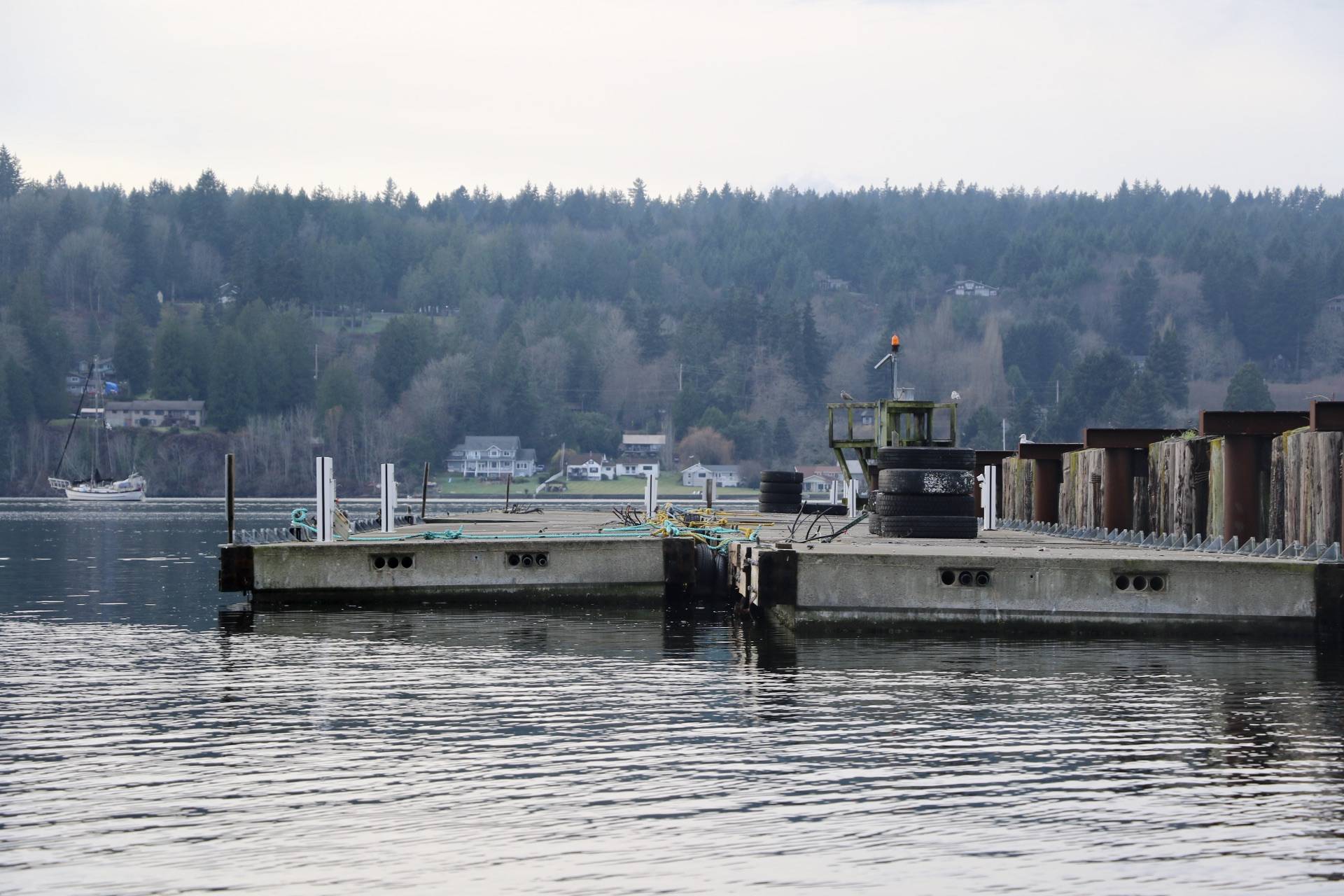The Port of Poulsbo has applied for a Shoreline Conditional Use permit with the City of Poulsbo to allow for the replacement of the failing breakwater.
While construction won’t begin until July, barring any issues with the Army Corp of Engineers or National Marine Fisheries, the planning for this new breakwater began in 2018.
Elliot Bay Marina donated the 12-foot concrete pontoon breakwater with new steel pilings, which has slowly made its way to the Poulsbo Marina over the last two years. The new breakwater will be connected to the Port’s existing AA dock, installing an additional 8-foot-wide grated float.
The new breakwater will add 62 boat slips to the marina, 24 new spaces for 30-foot vessels, 22 for 50-foot vessels, and 16 60-foot vessels. Additionally seaplane mooring will be relocated from C-Dock to the new breakwater.
“Our current guest moorage slips were designed for thirty foot vessels, not for the larger, wider vessels that are being used today. We frequently have to turn away larger vessels simply because we do not have space for them,” said Carol Tripp, port manager.
The hope is that more spaces, as well as additional facilities, will bring more business to both the marina and downtown Poulsbo.
“Currently, boaters visiting the Port of Poulsbo marina bring in over $2.63 million dollars annually to downtown businesses directly. With the availability of larger slips, the Port will be able to accommodate larger vessels on the linear side of the breakwater, which could include small cruise ships,” Tripp said.
“Obviously with capacity for larger boats and additional moorage, the Port will have additional boat traffic. We have planned for the additional traffic by including plans for a floating restroom with a ‘pump out’ located on it. The Port will also incorporate a FLUPSY (floating upweller system) into the breakwater.”
Also, the Poulsbo Yacht Club would like the floating C dock to D dock, reconfiguring the central portion to prevent it from grounding during low tide.
That project will be largely funded by two grants (one state and one federal) totaling $2.44 million. The Port Commission, in an effort to be fiscally responsible, has scaled back the project from its original proposal. The Port will be contributing funds to the project, but will still need to procure a small bond to complete it.



